Technology
Perseverance rover shares update during tricky Mars climb
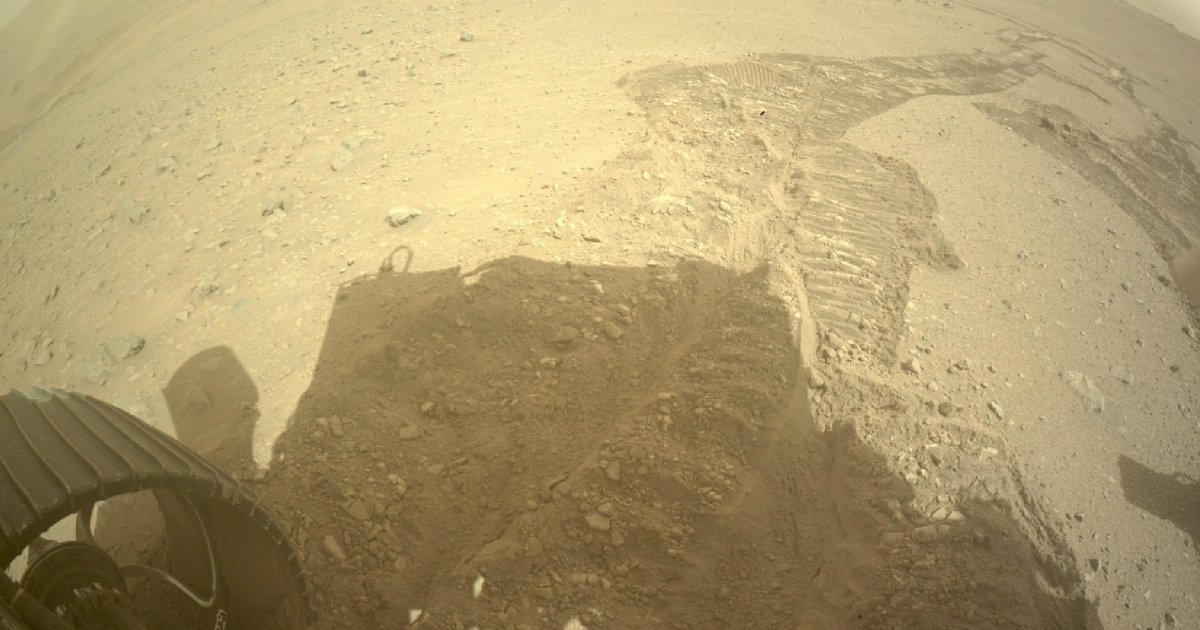

NASA’s Perseverance rover is in the middle of a months-long journey up the rim of Jezero Crater on Mars, and on Thursday it beamed back a status update.
The vehicle started the climb in August in what’s considered to be the most ambitious and arduous phase of Perseverance’s mission since arriving at the red planet in early 2021.
“My journey to the rim of Jezero Crater has been a challenging one,” the rover said in a post on its social media account overseen by NASA’s Jet Propulsion Laboratory, which is conducting the Mars mission. “As you can see in this image from my rear Hazcam, I’m dealing with some steep and slippery terrain. But thanks to my team and autonomous navigation system, I’m avoiding any big hazards as I slowly make my way up.”
The image, below, shows one of the rover’s six wheels and the tracks left by them as Perseverance performs its climb.
My journey to the rim of Jezero Crater has been a challenging one.
As you can see in this image from my rear Hazcam, I’m dealing with some steep and slippery terrain. But thanks to my team and autonomous navigation system, I'm avoiding any big hazards as I slowly make my way up. pic.twitter.com/zlZRqeTPWM
— NASA's Perseverance Mars Rover (@NASAPersevere) October 17, 2024
In an earlier post, Perseverance said it has a few spots to explore on its way to the top, adding that the JPL team was most excited about an area over the crest and outside the crater called Witch Hazel Hill, which includes the most ancient martian crust that the rover is likely to encounter on its journey.
To get there, Perseverance is tackling slopes of up to 23 degrees and which rise around 1,000 feet (305 meters).
Perseverance has spent pretty much all of the last three-and-a-half years exploring the floor of Jezero Crater, as well as the site of an ancient river delta. NASA selected this area for the mission as it was once a huge lake that may have contained microbial life. Perseverance has been collecting cores of rock from this location for later analysis that could reveal if life ever existed on the faraway planet.
Technology
NYT Crossword: answers for Thursday, October 17
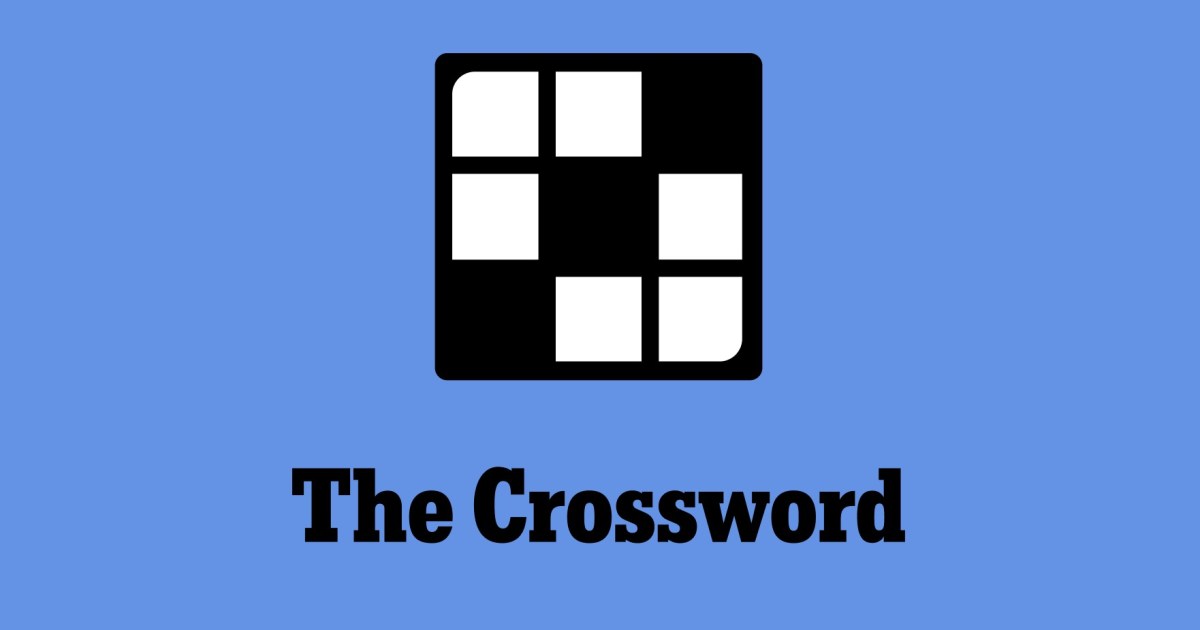

The New York Times crossword puzzle can be tough! If you’re stuck, we’re here to help with a list of today’s clues and answers.
Technology
FCC mandates all phones will have to be hearing aid-compatible
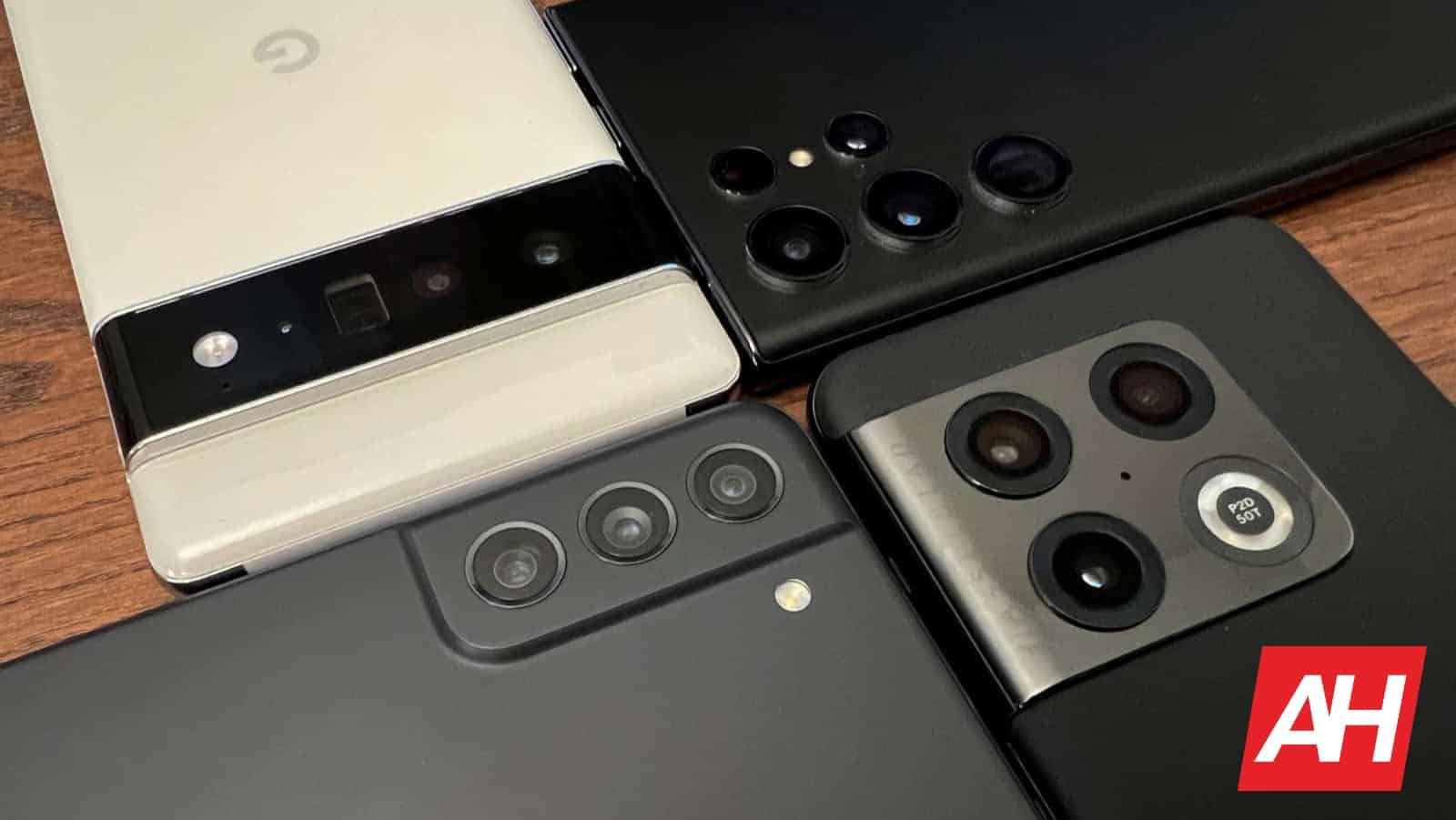
The FCC has approved regulations that mandate phone manufacturers to ensure their products work with hearing aids. Making phones compatible with hearing aids could help the aging American population.
All phones in the US to be compatible with hearing aids
The Apple AirPods Pro 2 has a hearing aid feature. With this feature activated, these premium True Wireless Stereo earbuds can transform into over-the-counter hearing aids. Needless to say, this approval must have shaken up the hearing aid market.
The US FCC has now reportedly approved new regulations that require all phone makers to make their handsets compatible with hearing aids. While announcing the new rules for phone manufacturers, the FCC stated, “Under the new rules, after a transition period, Americans with hearing loss will no longer be limited in their choice of technologies, features, and prices available in the mobile handset marketplace.”
The FCC has appreciated cell carriers, phone makers, and researchers for coming up with the final draft of the new rules. The agency categorically noted, “Establishing a 100% hearing aid compatibility requirement for all mobile handsets was made possible by the collaborative efforts of members of the Hearing Aid Compatibility Task Force — an independent organization of wireless service providers, handset manufacturers, research institutions, and advocates for those with hearing loss.”
Appreciating the industries involved seems necessary because these tech and hardware companies would have to collaborate closely for this to work. Ensuring every cellphone can work reliably with any hearing aid would need wireless communication protocols to be perfectly cross-compatible.
Hearing aids work quite differently compared to regular headphones. Although the basic premise is the same, hearing aids have to correctly amplify different aspects or frequencies of incoming sound. This needs careful calibration of multiple hardware and software components. It’s no wonder that only a few companies such as Apple and Samsung were able to lead this nascent but growing market.
Phone makers must ensure distortion-free sound at high volume
Incidentally, the onus of ensuring phones work with hearing aids doesn’t rest solely on the device manufacturers. Even hearing aid makers will have to make some fundamental changes.
Specifically speaking, the FCC has practically banned proprietary Bluetooth coupling standards in assistive devices. This rule extends to OTC hearing aids such as Apple’s AirPods Pro 2, and other products that would launch in the future.
The FCC is also forcing phone manufacturers to embed better-quality audio enhancement chips in their products. Moving forward, all new mobile handsets sold in the US will have to allow users to raise the volume without introducing distortion. In other words, handset makers will have to ensure their devices deliver clear and crisp sound, even at high volumes.
Cellphones sold in the US would have to carry labels that clearly state hearing aid compatibility. The packaging must also mention whether the handsets meet Bluetooth or telecoil coupling requirements.
Technology
Sam Altman’s Worldcoin startup is dropping the coin and doubling down on Orbs
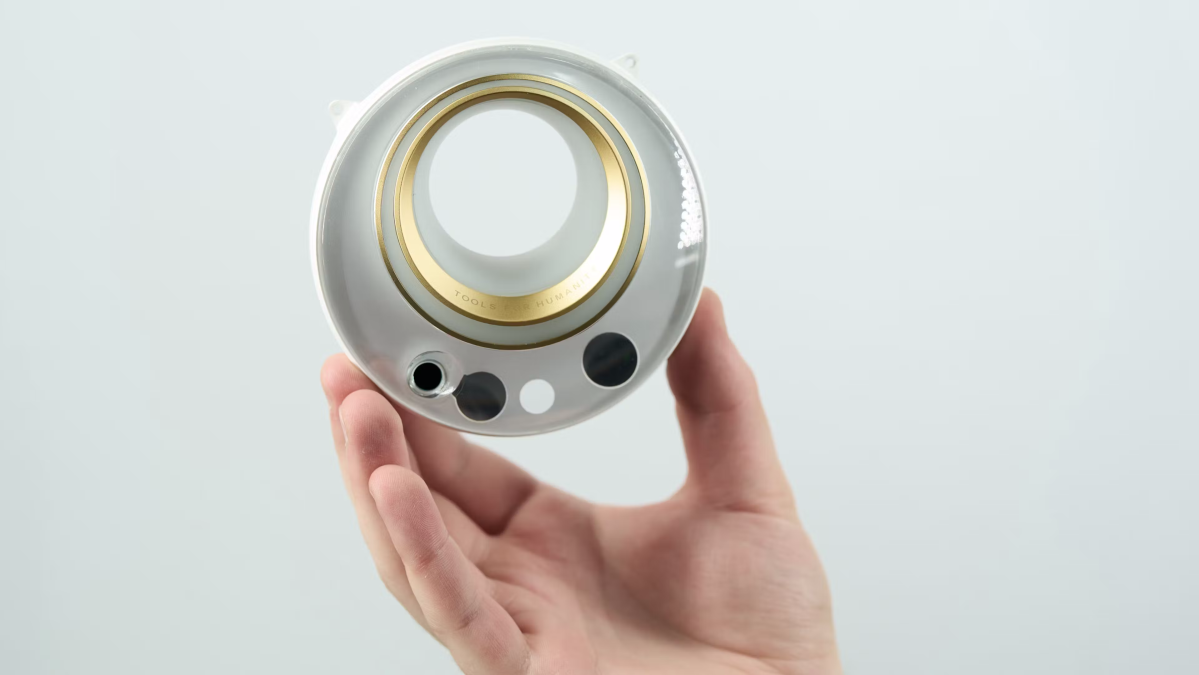
Sam Altman’s Worldcoin is going to need some new business cards printed up because it’s dropping the “coin” in its name. The OpenAI CEO’s startup is shifting from cryptocurrency to focus more on its identification technology and it just unveiled a new version of its signature gadget.
reported that the new company called (wait for it) World will focus its eye scanning tech on confirming identities, something that could come in handy in a world of deep fake videos popping up all over the internet.
Co-founder and CEO Alex Blania introduced the World’s newest device called Orb, a biometric eye scanner used to confirm human identities through an identity service called Deep Face.
The latest model of the Orb, which uses NVIDIA’s Jetson chipset, will roll out to customers as the need arises. Chief Device Officer Rich Heley said at the San Francisco event that access to the Orb will be on demand and delivered the same way that people order pizza. A company statement says, “These advancements make it possible to offer new ways of providing World ID’s proof of human verification in more places around the world.”
According to , almost 7 million people have been scanned by World Orbs to date. Everyone in attendance at the San Francisco launch event received a free Orb for their human identifying needs.
Technology
Small but mighty: H2O.ai’s new AI models challenge tech giants in document analysis

Join our daily and weekly newsletters for the latest updates and exclusive content on industry-leading AI coverage. Learn More
H2O.ai, a provider of open-source AI platforms, announced today two new vision-language models designed to improve document analysis and optical character recognition (OCR) tasks.
The models, named H2OVL Mississippi-2B and H2OVL-Mississippi-0.8B, show competitive performance against much larger models from major tech companies, potentially offering a more efficient solution for businesses dealing with document-heavy workflows.
David vs. Goliath: How H2O.ai’s tiny models are outsmarting tech giants
The H2OVL Mississippi-0.8B model, with only 800 million parameters, surpassed all other models, including those with billions more parameters, on the OCRBench Text Recognition task. Meanwhile, the 2-billion parameter H2OVL Mississippi-2B model demonstrated strong general performance across a range of vision-language benchmarks.
“We’ve designed H2OVL Mississippi models to be a high-performance yet cost-effective solution, bringing AI-powered OCR, visual understanding, and Document AI to businesses,” Sri Ambati, CEO and Founder of H2O.ai said in an exclusive interview with VentureBeat. “By combining advanced multimodal AI with efficiency, H2OVL Mississippi delivers precise, scalable Document AI solutions across a range of industries.”
The release of these models marks a significant step in H2O.ai’s strategy to make AI technology more accessible. By making the models freely available on Hugging Face, a popular platform for sharing machine learning models, H2O.ai is allowing developers and businesses to modify and adapt the models for specific document AI needs.

Efficiency meets effectiveness: A new approach to document processing
Ambati highlighted the economic advantages of smaller, specialized models. “Our approach to generative pre-trained transformers stems from our deep investment in Document AI, where we collaborate with customers to extract meaning from enterprise documents,” he said. “These models can run anywhere, on a small footprint, efficiently and sustainably, allowing fine-tuning on domain-specific images and documents at a fraction of the cost.”
The announcement comes as businesses seek more efficient ways to process and extract information from large volumes of documents. Traditional OCR and document analysis methods often struggle with poor-quality scans, challenging handwriting, or heavily modified documents. H2O.ai’s new models aim to address these issues while offering a more resource-efficient alternative to larger language models that may be excessive for specific document-related tasks.
Industry analysts note that H2O.ai’s approach could disrupt the current landscape dominated by tech giants. By focusing on smaller, more specialized models, H2O.ai may be able to capture a significant portion of the enterprise market that values efficiency and cost-effectiveness.

Open source and enterprise-ready: H2O.ai’s strategy for AI adoption
“At H2O.ai, making AI accessible isn’t just an idea. It’s a movement,” Ambati told VentureBeat. “By releasing a series of small foundational models that can be easily fine-tuned to specific tasks, we are expanding the possibilities for creating and using AI.”
H2O.ai has raised $256 million from investors including Commonwealth Bank, Nvidia, Goldman Sachs, and Wells Fargo. The company’s open-source approach and focus on practical, enterprise-ready AI solutions have helped it build a community of over 20,000 organizations and more than half of the Fortune 500 companies as customers.
As businesses continue to grapple with digital transformation and the need to extract value from unstructured data, H2O.ai’s new vision-language models could provide a compelling option for those looking to implement document AI solutions without the computational overhead of larger models. The true test will be in real-world applications, but H2O.ai’s demonstration of competitive performance with much smaller models suggests a promising direction for the future of enterprise AI.
Source link
Technology
Can AI make us feel less alone? The founder of Manifest thinks so

Amy Wu, founder of the AI-based mental health app Manifest, has a bold prediction for the next wave of tech.
“Separately from the AI trend, I think so many people are seeing this loneliness epidemic that’s happening with Gen Z,” she said. “There is no doubt in my mind that there will be unicorns that emerge from those categories to address the loneliness epidemic.”
Manifest isn’t quite a unicorn yet — it’s only in its seed stage, having just raised $3.4 million from a16z Speedrun and a number of other investors. But Wu sees her company as part of a new crop of products trying to mitigate a rise in loneliness.
Wu is in her late twenties, right on the cusp of the murky boundary between millennials and Gen Z, but she understands the struggles of the younger generation. A report from Cigna found that three out of five adults report that they sometimes or always feel lonely; that number is even higher among respondents aged 18-22, at 73%. Manifest is the app she wishes she had when she was an undergraduate at Stanford, navigating a competitive, intimidating environment while living on her own for the first time.
“I really felt like the real world punched me in the face,” Wu told TechCrunch. “I feel like school teaches you all these things around, here’s how to get a job at Facebook, or Google, or Microsoft, or Goldman Sachs, but it doesn’t teach you how to go build your own emotional toolkit.”
When you open the Manifest app, you’ll see a pastel gradient orb in the center of the screen. You can hold the button to talk, or tap it to type, in response to a number of prompts: “What’s on your mind?,” “What are you worried about?,” or “What would be useful for us to talk about?”
Then, the app’s AI will mirror your language and turn it into an affirmation, which you can turn into a personalized audio meditation.

For example, if you tell the app that you’re finding it hard to be proud of yourself after running a 5K because you got last place in your age group (totally not pulling from personal experience…!), it will spit out a couple of affirmations, like, “I strive to appreciate my progress, no matter how small,” or, “I trust that my commitment to this process will lead to growth in both my physical and mental health.”
Maybe those words of AI-generated wisdom help. Maybe they don’t. But Manifest isn’t meant to be an end-all-be-all mental health solution or a replacement for actual mental health treatment. Instead, Manifest is designed to be something that you can use for a few minutes every day to feel just a little bit more grounded.
“We are a wellness app that’s really kind of designed to meet Gen Z where they’re already at,” Wu said. “The real core thesis behind Manifest was like, can we make these bite-sized interactions with wellness super easy and super delightful, where it doesn’t feel like a chore to go do Manifest?”
In a time when young people are overwhelmed by the constant noise of social media, it may seem counterintuitive to use technology — let alone something that can feel as impersonal and amorphous as AI — to address loneliness. But Wu thinks that if Gen Z is already sucked into their phones, then wellness needs to happen there, too.
“Gen Z is hanging out way less in person,” she said. “So it’s like, what do you give a generation that we’ve already done this to? Like, the idea that you tell that person to go outside and hang with their friend is an astronomical leap for them, so how do you go and give them something where they’re already at?”

Manifest launched in stealth this summer, and so far, users have generated 18.7 million “manifestations” in the app.
As with any app of its nature, Manifest has to navigate the ethical challenges around making a consumer mental health product with no medical backing. Wu said that there are safeguards embedded in Manifest’s AI, such as redirecting users to a suicide hotline if they mention self-harm. There are some topics like this that Manifest will decline to engage with.
From a risk standpoint, this could be a smart move for Manifest — it’s dangerous to leverage an experimental AI as a tool to help with something as serious as preventing self-harm. But other startups battling loneliness, like chatbot company Nomi AI, take a different approach. When Nomi AI users open up about thoughts of self-harm, the AI companions won’t halt the conversation — instead, they will try to de-escalate the situation by talking the user through their feelings.
Alex Cardinell, the founder of Nomi AI, argues that just stopping a conversation and providing a suicide hotline number could be alienating to someone who’s struggling for connection.
“I want to make those users feel heard in whatever their dark moment is, because that’s how you get someone to open up, how you get someone to reconsider their way of thinking,” Cardinell told TechCrunch in a recent conversation. “I really want to look at what’s aligned with the user, rather than what’s aligned with the strictest attorney’s loss mitigation strategy.”
Wu doesn’t think that Manifest, or any consumer app, is where people should go if they are in a situation where they need legitimate medical help. But young people are turning to these tools when seeking real medical care isn’t accessible. So, if Wu is right about the impending unicorn startups that will combat the loneliness epidemic, those companies — and Manifest — will need to tread thoughtfully.
TechCrunch has an AI-focused newsletter! Sign up here to get it in your inbox every Wednesday.
Technology
Amazon will stream a live election special hosted by Brian Williams
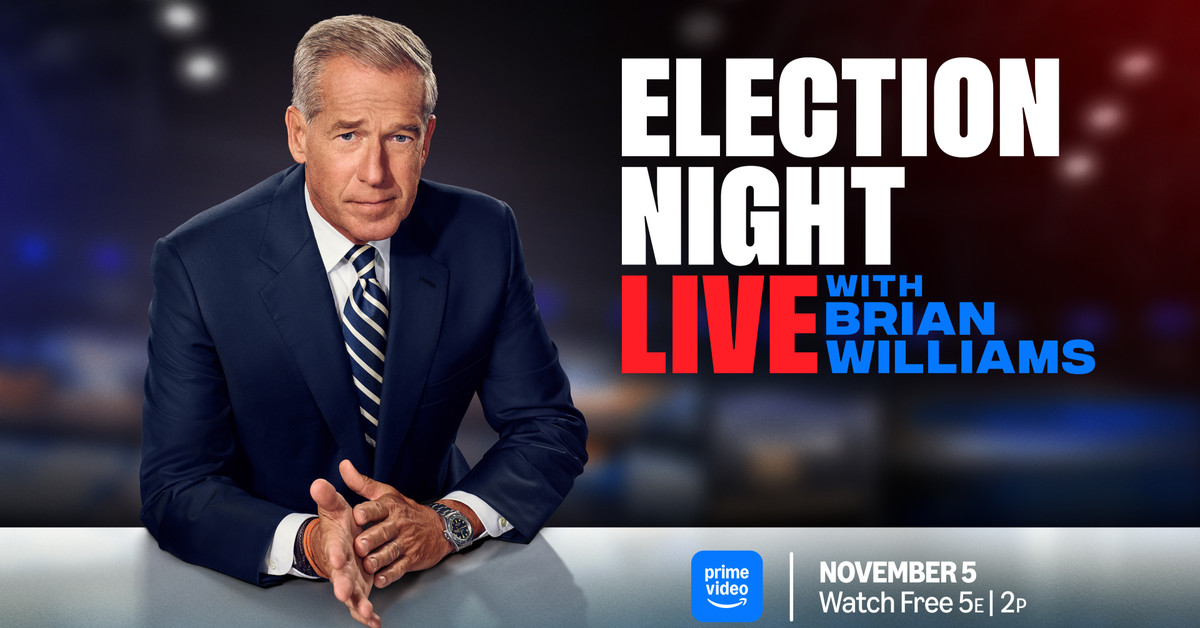
Amazon wants Prime Video to be the place you watch coverage of election night. The company announced today that it will be streaming a live election night special on Prime Video hosted by former NBC Nightly News anchor Brian Williams. The show will kick off on November 5th at 5PM ET.
“Brian Williams will be joined live by guests including prominent contributors across news and traditional media, representing a range of backgrounds and perspectives, to share real-time poll results and commentary while also referencing third-party news sources across all political affiliations,” Amazon writes in a blog post. The company adds that it will be an “informative, accessible and non-partisan presentation.” Amazon will announce the guests in “the coming weeks.”
The show and Williams’ involvement were rumored to be in the works last month.
This election night special is just the latest live programming from Amazon on Prime Video. The company has aired live Thursday Night Football NFL games since 2022, and it will be getting a lot of NBA games starting in 2025.
-

 Science & Environment4 weeks ago
Science & Environment4 weeks agoHyperelastic gel is one of the stretchiest materials known to science
-

 Technology4 weeks ago
Technology4 weeks agoWould-be reality TV contestants ‘not looking real’
-

 Technology3 weeks ago
Technology3 weeks agoIs sharing your smartphone PIN part of a healthy relationship?
-

 Science & Environment4 weeks ago
Science & Environment4 weeks agoHow to unsnarl a tangle of threads, according to physics
-

 Science & Environment4 weeks ago
Science & Environment4 weeks ago‘Running of the bulls’ festival crowds move like charged particles
-

 Science & Environment4 weeks ago
Science & Environment4 weeks agoMaxwell’s demon charges quantum batteries inside of a quantum computer
-

 Science & Environment4 weeks ago
Science & Environment4 weeks agoLiquid crystals could improve quantum communication devices
-

 Womens Workouts3 weeks ago
Womens Workouts3 weeks ago3 Day Full Body Women’s Dumbbell Only Workout
-

 Science & Environment3 weeks ago
Science & Environment3 weeks agoX-rays reveal half-billion-year-old insect ancestor
-

 Science & Environment4 weeks ago
Science & Environment4 weeks agoQuantum ‘supersolid’ matter stirred using magnets
-

 Science & Environment4 weeks ago
Science & Environment4 weeks agoSunlight-trapping device can generate temperatures over 1000°C
-

 Science & Environment4 weeks ago
Science & Environment4 weeks agoWhy this is a golden age for life to thrive across the universe
-

 Science & Environment4 weeks ago
Science & Environment4 weeks agoNerve fibres in the brain could generate quantum entanglement
-

 Science & Environment4 weeks ago
Science & Environment4 weeks agoQuantum forces used to automatically assemble tiny device
-

 Science & Environment4 weeks ago
Science & Environment4 weeks agoA slight curve helps rocks make the biggest splash
-

 Science & Environment4 weeks ago
Science & Environment4 weeks agoLaser helps turn an electron into a coil of mass and charge
-

 Science & Environment4 weeks ago
Science & Environment4 weeks agoITER: Is the world’s biggest fusion experiment dead after new delay to 2035?
-

 Science & Environment4 weeks ago
Science & Environment4 weeks agoHow to wrap your mind around the real multiverse
-
News1 month ago
the pick of new debut fiction
-

 News4 weeks ago
News4 weeks agoOur millionaire neighbour blocks us from using public footpath & screams at us in street.. it’s like living in a WARZONE – WordupNews
-

 Science & Environment4 weeks ago
Science & Environment4 weeks agoTime travel sci-fi novel is a rip-roaringly good thought experiment
-

 Science & Environment4 weeks ago
Science & Environment4 weeks agoNuclear fusion experiment overcomes two key operating hurdles
-

 Technology3 weeks ago
Technology3 weeks agoWhy Machines Learn: A clever primer makes sense of what makes AI possible
-

 News1 month ago
News1 month ago▶️ Hamas in the West Bank: Rising Support and Deadly Attacks You Might Not Know About
-

 Science & Environment4 weeks ago
Science & Environment4 weeks agoPhysicists are grappling with their own reproducibility crisis
-

 News4 weeks ago
News4 weeks ago▶️ Media Bias: How They Spin Attack on Hezbollah and Ignore the Reality
-

 Science & Environment4 weeks ago
Science & Environment4 weeks agoA new kind of experiment at the Large Hadron Collider could unravel quantum reality
-

 News4 weeks ago
News4 weeks agoYou’re a Hypocrite, And So Am I
-
Business3 weeks ago
Eurosceptic Andrej Babiš eyes return to power in Czech Republic
-

 Technology3 weeks ago
Technology3 weeks agoMicrophone made of atom-thick graphene could be used in smartphones
-

 Business2 weeks ago
Business2 weeks agoWhen to tip and when not to tip
-

 Sport2 weeks ago
Sport2 weeks agoCoco Gauff stages superb comeback to reach China Open final
-

 Science & Environment1 month ago
Science & Environment1 month agoCaroline Ellison aims to duck prison sentence for role in FTX collapse
-

 Science & Environment4 weeks ago
Science & Environment4 weeks agoPhysicists have worked out how to melt any material
-

 Sport4 weeks ago
Sport4 weeks agoJoshua vs Dubois: Chris Eubank Jr says ‘AJ’ could beat Tyson Fury and any other heavyweight in the world
-

 News1 month ago
News1 month agoNew investigation ordered into ‘doorstep murder’ of Alistair Wilson
-
News4 weeks ago
The Project Censored Newsletter – May 2024
-

 Sport3 weeks ago
Sport3 weeks agoWatch UFC star deliver ‘one of the most brutal knockouts ever’ that left opponent laid spark out on the canvas
-

 Technology3 weeks ago
Technology3 weeks agoUkraine is using AI to manage the removal of Russian landmines
-

 Sport2 weeks ago
Sport2 weeks agoWales fall to second loss of WXV against Italy
-

 Technology3 weeks ago
Technology3 weeks agoUniversity examiners fail to spot ChatGPT answers in real-world test
-

 Technology2 weeks ago
Technology2 weeks agoThis AI video generator can melt, crush, blow up, or turn anything into cake
-
Business2 weeks ago
DoJ accuses Donald Trump of ‘private criminal effort’ to overturn 2020 election
-

 Science & Environment4 weeks ago
Science & Environment4 weeks agoRethinking space and time could let us do away with dark matter
-

 Technology3 weeks ago
Technology3 weeks agoQuantum computers may work better when they ignore causality
-

 Health & fitness4 weeks ago
Health & fitness4 weeks agoThe secret to a six pack – and how to keep your washboard abs in 2022
-

 Science & Environment4 weeks ago
Science & Environment4 weeks agoA tale of two mysteries: ghostly neutrinos and the proton decay puzzle
-

 Technology3 weeks ago
Technology3 weeks agoRobo-tuna reveals how foldable fins help the speedy fish manoeuvre
-
Business3 weeks ago
Should London’s tax exiles head for Spain, Italy . . . or Wales?
-

 MMA3 weeks ago
MMA3 weeks agoConor McGregor challenges ‘woeful’ Belal Muhammad, tells Ilia Topuria it’s ‘on sight’
-

 Football3 weeks ago
Football3 weeks agoFootball Focus: Martin Keown on Liverpool’s Alisson Becker
-

 Science & Environment4 weeks ago
Science & Environment4 weeks agoFuture of fusion: How the UK’s JET reactor paved the way for ITER
-

 News4 weeks ago
News4 weeks agoIsrael strikes Lebanese targets as Hizbollah chief warns of ‘red lines’ crossed
-

 Technology3 weeks ago
Technology3 weeks ago‘From a toaster to a server’: UK startup promises 5x ‘speed up without changing a line of code’ as it plans to take on Nvidia, AMD in the generative AI battlefield
-

 Sport3 weeks ago
Sport3 weeks agoWorld’s sexiest referee Claudia Romani shows off incredible figure in animal print bikini on South Beach
-
Business2 weeks ago
Bank of England warns of ‘future stress’ from hedge fund bets against US Treasuries
-

 TV2 weeks ago
TV2 weeks agoPhillip Schofield accidentally sets his camp on FIRE after using emergency radio to Channel 5 crew
-

 Technology2 weeks ago
Technology2 weeks agoAmazon’s Ring just doubled the price of its alarm monitoring service for grandfathered customers
-

 News2 weeks ago
News2 weeks agoHeartbreaking end to search as body of influencer, 27, found after yacht party shipwreck on ‘Devil’s Throat’ coastline
-

 News2 weeks ago
News2 weeks agoMassive blasts in Beirut after renewed Israeli air strikes
-

 Technology1 month ago
Technology1 month agoThe ‘superfood’ taking over fields in northern India
-
Politics4 weeks ago
UK consumer confidence falls sharply amid fears of ‘painful’ budget | Economics
-

 News4 weeks ago
News4 weeks agoWhy Is Everyone Excited About These Smart Insoles?
-

 Technology3 weeks ago
Technology3 weeks agoGet ready for Meta Connect
-
Politics3 weeks ago
Robert Jenrick vows to cut aid to countries that do not take back refused asylum seekers | Robert Jenrick
-

 Health & fitness3 weeks ago
Health & fitness3 weeks agoThe 7 lifestyle habits you can stop now for a slimmer face by next week
-

 News1 month ago
News1 month agoHow FedEx CEO Raj Subramaniam Is Adapting to a Post-Pandemic Economy
-

 Science & Environment4 weeks ago
Science & Environment4 weeks agoBeing in two places at once could make a quantum battery charge faster
-

 CryptoCurrency4 weeks ago
CryptoCurrency4 weeks agoCardano founder to meet Argentina president Javier Milei
-

 Science & Environment4 weeks ago
Science & Environment4 weeks agoWhy we need to invoke philosophy to judge bizarre concepts in science
-

 Science & Environment4 weeks ago
Science & Environment4 weeks agoUK spurns European invitation to join ITER nuclear fusion project
-

 Sport4 weeks ago
Sport4 weeks agoUFC Edmonton fight card revealed, including Brandon Moreno vs. Amir Albazi headliner
-
Politics4 weeks ago
‘Appalling’ rows over Sue Gray must stop, senior ministers say | Sue Gray
-

 TV4 weeks ago
TV4 weeks agoCNN TÜRK – 🔴 Canlı Yayın ᴴᴰ – Canlı TV izle
-

 News4 weeks ago
News4 weeks agoFour dead & 18 injured in horror mass shooting with victims ‘caught in crossfire’ as cops hunt multiple gunmen
-

 Womens Workouts3 weeks ago
Womens Workouts3 weeks ago3 Day Full Body Toning Workout for Women
-

 Servers computers3 weeks ago
Servers computers3 weeks agoWhat are the benefits of Blade servers compared to rack servers?
-
Business2 weeks ago
Ukraine faces its darkest hour
-

 MMA2 weeks ago
MMA2 weeks agoDana White’s Contender Series 74 recap, analysis, winner grades
-

 MMA2 weeks ago
MMA2 weeks agoPereira vs. Rountree prediction: Champ chases legend status
-

 News2 weeks ago
News2 weeks agoHull KR 10-8 Warrington Wolves – Robins reach first Super League Grand Final
-

 Technology2 weeks ago
Technology2 weeks agoA very underrated horror movie sequel is streaming on Max
-

 News2 weeks ago
News2 weeks ago▶ Hamas Spent $1B on Tunnels Instead of Investing in a Future for Gaza’s People
-

 Entertainment2 weeks ago
Entertainment2 weeks agoChristopher Ciccone, artist and Madonna’s younger brother, dies at 63
-

 Business2 weeks ago
Business2 weeks agoChancellor Rachel Reeves says she needs to raise £20bn. How might she do it?
-

 Sport2 weeks ago
Sport2 weeks agoLauren Keen-Hawkins: Injured amateur jockey continues progress from serious head injury
-

 MMA2 weeks ago
MMA2 weeks agoJulianna Peña trashes Raquel Pennington’s behavior as champ
-

 TV2 weeks ago
TV2 weeks agoসারাদেশে দিনব্যাপী বৃষ্টির পূর্বাভাস; সমুদ্রবন্দরে ৩ নম্বর সংকেত | Weather Today | Jamuna TV
-

 Technology2 weeks ago
Technology2 weeks agoMusk faces SEC questions over X takeover
-

 Technology2 weeks ago
Technology2 weeks agoTexas is suing TikTok for allegedly violating its new child privacy law
-

 Technology2 weeks ago
Technology2 weeks agoApple iPhone 16 Plus vs Samsung Galaxy S24+
-
Business2 weeks ago
Can liberals be trusted with liberalism?
-

 News2 weeks ago
News2 weeks agoBalancing India and China Is the Challenge for Sri Lanka’s Dissanayake
-

 News2 weeks ago
News2 weeks agoNavigating the News Void: Opportunities for Revitalization
-

 CryptoCurrency4 weeks ago
CryptoCurrency4 weeks agoDZ Bank partners with Boerse Stuttgart for crypto trading
-
Business4 weeks ago
Thames Water seeks extension on debt terms to avoid renationalisation
-

 Womens Workouts4 weeks ago
Womens Workouts4 weeks agoEverything a Beginner Needs to Know About Squatting
-

 News4 weeks ago
News4 weeks agoShocking ‘kidnap’ sees man, 87, bundled into car, blindfolded & thrown onto dark road as two arrested
-

 Science & Environment4 weeks ago
Science & Environment4 weeks agoMeet the world's first female male model | 7.30
-
Business1 month ago
JPMorgan in talks to take over Apple credit card from Goldman Sachs

You must be logged in to post a comment Login